-
Posts
780 -
Joined
-
Last visited
Content Type
Profiles
Forums
Gallery
Events
Posts posted by woodrat
-
-
-
- Louie da fly, Elmer Cornish, hexnut and 6 others
-
 9
9
-
These pictures show the transversal bitt in place although not fixed in place. These bitts were a typical feature of the carrack and were probably not meant to be rigidly fixed to the toptimbers. They were however quite massive.
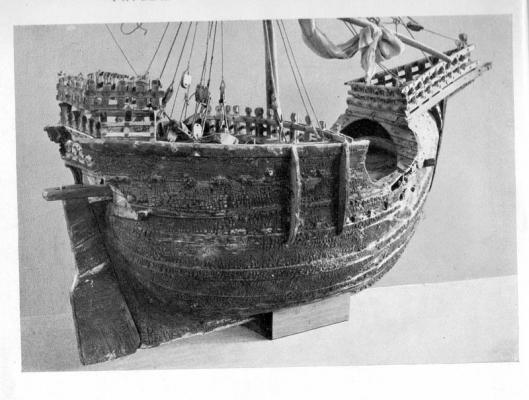 Here is a picture of the Mataro nao showing the transversal bitt.
Here is a picture of the Mataro nao showing the transversal bitt.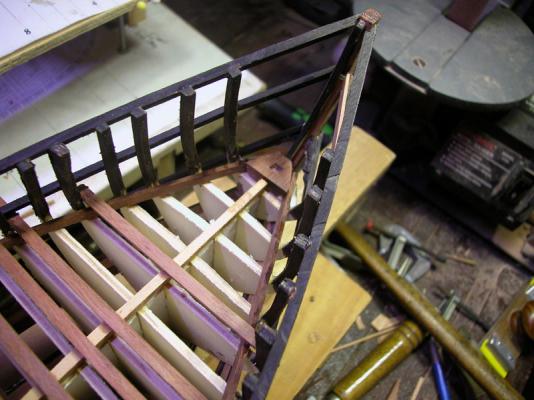 This shows the step for the foremast
This shows the step for the foremastDick
- mtaylor, WackoWolf, Salty Sea Dog and 5 others
-
 8
8
-
Thanks, Vivian and Steven. Here is the progress of planking to the level of the turn of the stringer at the outer end of the floors
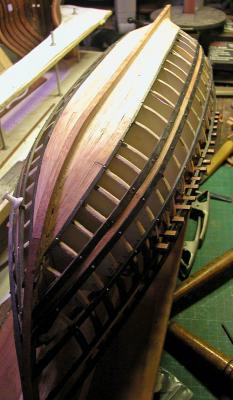 planking complete to first stringer
planking complete to first stringerHere is another similar carrack. Note the triangular topsail and the forward positioned foremast. I will base my rig upon this illustration
Dick
- hexnut, mtaylor, Elmer Cornish and 6 others
-
 9
9
-
- tarbrush, captainbob, mtaylor and 10 others
-
 13
13
-
Maybe will be interesting photo of this model I take this summer in Maritime museum of Kotor, Montenegro
Model is based on ships used in Venetia, by famous middle age traders of Venetian republic
In Serbian/Croatian language, for this ship is used name "karaka" and you can google it for deeper research
Nenad
Thank you for the link, Nenad. The model shown is certainly a venetian carrack and is quite old. It looks somewhat like the carracks in Jacopo de Barbari's panorama of Venice.
Good idea to get information or pictures of models from Dubrovnik, Split and Rijeka. They, as you say, were on venetian trading routes for centuries. The Trombetta nave certainly would have visited them regularly.
Cheers
Dick
-
- hexnut, Elmer Cornish, druxey and 2 others
-
 5
5
-
Thanks Tarbrush, Bob and Nenad M. I am learning more and more about carracks. For instance, this carrack forecastle from late 15th century shows how the carpenters built the framework for their awning assymetric to allow for the foremast. This may explain the somewhat bizarre appearance of this framework on the Trombetta drawings. The position of the foremast also forced the positioning of the bowsprit to one side or other of the mast. These were no nonsense working ships and often aesthetics took second place to practicalities. also, as this illustration from the battle of Zonchio shows, round ships were often co-opted as warships in mediaeval times as their high riding hulls gave them a height advantage over galleys. Cheers, Dick
- mtaylor, Vivian Galad and druxey
-
 3
3
-
Thanks, Michael. Most kind in you. I certainly would recommend doing the longboat for your Wasa. I found the ship's boats a very satisfying part of the build and building it over a mould is easier than you think. Great work on the Wasa too.
Dick
-
-
I am unhappy with two things on my previous model:
1. the tumblehome aft of centre is insufficient
2. There is a more horizontal run of planking to the fashion piece and a more vertical run to the sternpost leading to a more complex shape to the stern.
I will modify the full hull version accordingly
Dick
-
I just posted this on Vivian's caravel log but I thought it might be useful to you too as a rigging reference..?
Dan.
Thanks, Dan. The original book is beyond my price range but there is a softcover reprint. What concerns me is that I am unsure whether my carrack had two or three masts. It was a large vessel so three seems more likely but the fact that the bowsprit is displaced to starboard suggest a foremast. However the framing for the awning on the forecastle suggests otherwise. What do you think?

-
-
-
Steven, you may like this article on Yenikapi: http://woam2013.com/yenikapi-info.pdf
-
And Dick, sorry for derailing this thread - getting back to the subject, I just remembered a link I have to a site on the early 15th century ship designer Michael of Rhodes,
Steven
Thanks Steven, its a fascinating topic, the dromon. The third volume of the MIT edition of Michael of Rhodes is probably the most useful for the shipmodeller
I continue to be astounded by the quality of the works displayed here on this forum.
S.os
That's why we keep coming back, we're addicted
 Dick
Dick -
A bespoke manufacturer of ship models seems to have produced an excellent dromon reproduction following John H Pryor 's reconstruction. It is most impressive.
I have found a paperback version of his book which is affordable
http://www.brill.com/age-dromon-0
Dick
-
If you can locate plans by Ulrich Alertz, they may include his idea of a dromon. Certainly John H Pryor has written extensively and I note this publication which is way too expensive for me but a library might get a copy.
http://www.oxbowbooks.com/oxbow/the-age-of-the-dromon.html
Crackers' second illustration appears to be the same illustration of a dromon as is in the Conway' "Age of the Galley" p103 by John H Pryor but without the "double horned "stern. It is from John H Pryor's et al. The Age of the Dromon.
Dick
-
. I have a POB model of Henry VIII's Henry Grace a Dieu which I made in the 1960's when I was in my teens, based on the reconstruction in Bjorn Landstrom's book The Ship. I pulled the stern off when I realised it was wrong, and never got back to it. So fixing it up will be my first project, and then I have quite a number of possibles lined up - perhaps a carrack or a cog or a Byzantine dromon, I'm just not sure.
The dromon, now THERE'S a challenge
 ! I had a similar experience with a Billings POB "golden HInd" I had finished the hull but made the basic mistake of doing some research and realising that, above the main deck it was just plain wrong so I cast it into the outer darkness and swore never to do another kit. But later I cut it down to the main deck level and have kept the hull and have plans to resurrect it as the Elizabethan Ark Royal.
! I had a similar experience with a Billings POB "golden HInd" I had finished the hull but made the basic mistake of doing some research and realising that, above the main deck it was just plain wrong so I cast it into the outer darkness and swore never to do another kit. But later I cut it down to the main deck level and have kept the hull and have plans to resurrect it as the Elizabethan Ark Royal.The carrack bulkheads are nearly complete and I am tweaking the lines as I go.
Dick
-
Woodrat- Perhaps, it might be worthwhile, but Texas A&M University, has one of the few programs on Research and Archaeology on marine subjects.
. They can be reached at:
Montani semper liberi Happy modeling
Crackers


Thanks, Crackers, I have done just that and await a reply.
Dick
Or, in addition to what Crackers suggested, check out the Theses and Dissertations database (http://nautarch.tamu.edu/academic/alum.htm). There's a lot of useful information as well as some that are just plain good reading.
I agree, I have delved into a few of these dissertations and they are a goldmine. Courageous decision, by the way, about your Licorne. Sometimes it is better to "screw your courage to the sticking place" and get on with things.
Dick

- mtaylor and avsjerome2003
-
 2
2
-
Thanks. That's very useful. I'll have to add them to my "must buy" list.
Steven
At least get "Vanguard of Empire". Are you thinking of building a carrack or other style of mediaeval ship?
-
An excellent starting point is Roger Smith: "Vanguard of Empire" Oxford Press.
Other reference for iconography is: Lillian Ray Martin : "The Art and Archeology of Venetian Ships and Boats" Texas A&M Books
Articles by Mauro Bondioli in : "The Book of Michael of Rhodes vol 3" Long, McGee and Stahl eds. MIT Press
Of Course The volume in Conways History of the Ship " Cogs Caravels and Galleons" is a very useful starting point as well.
Dick
-
- Elmer Cornish, mtaylor and hexnut
-
 3
3
-



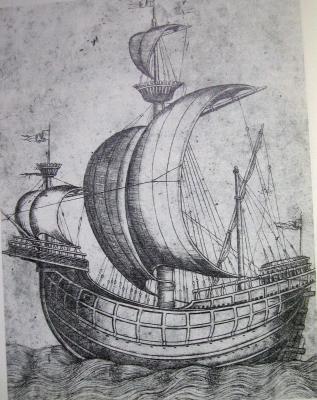
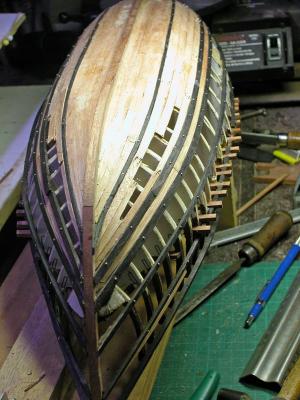
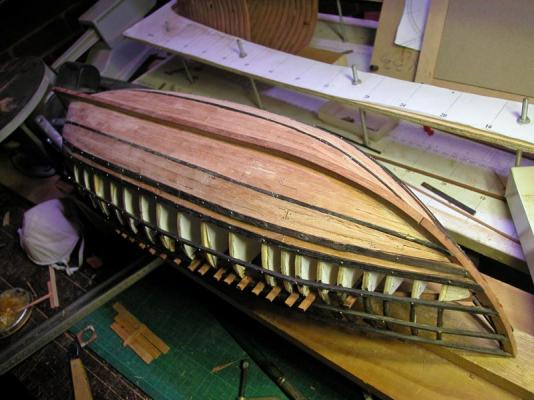
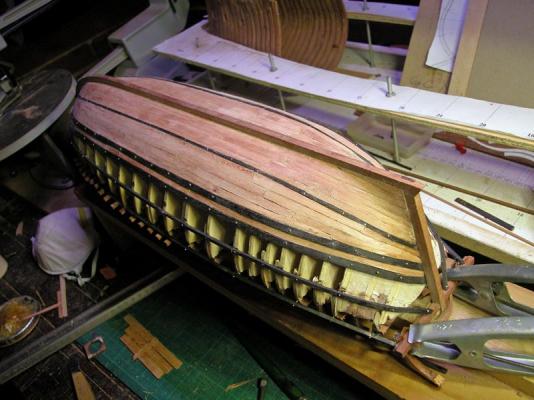
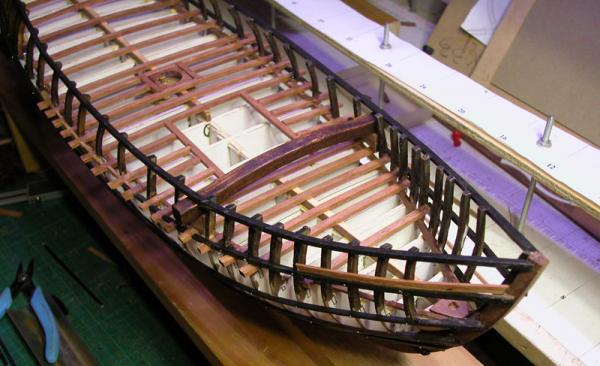
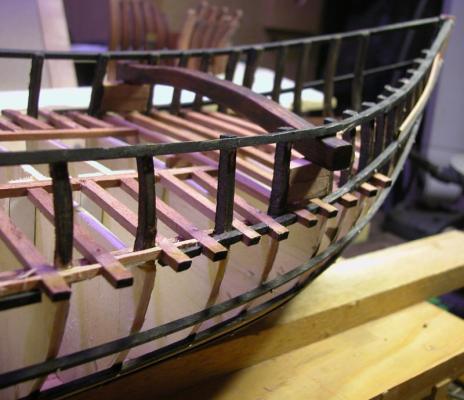
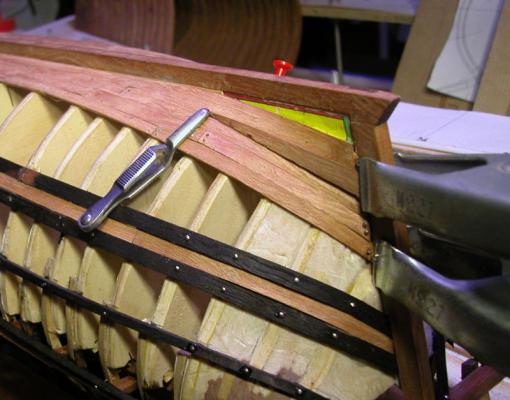
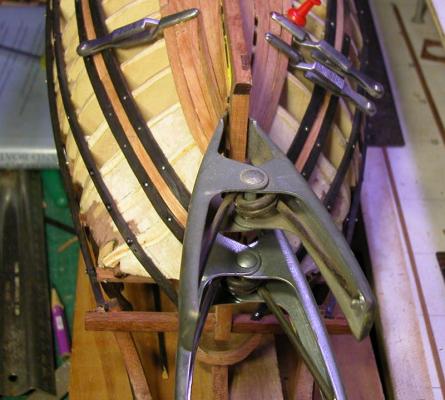
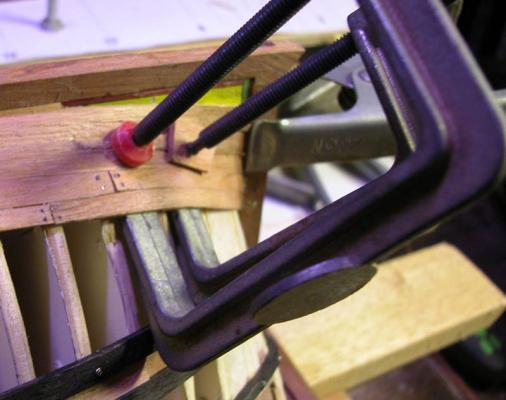
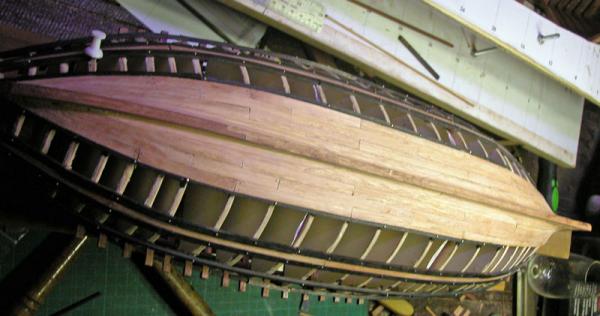
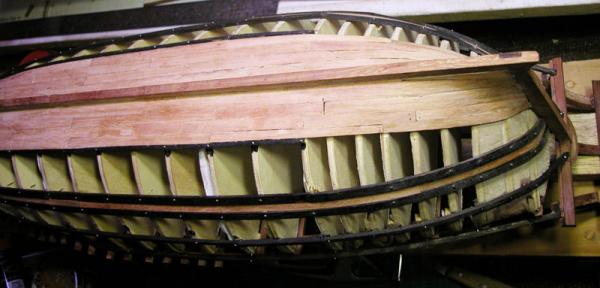

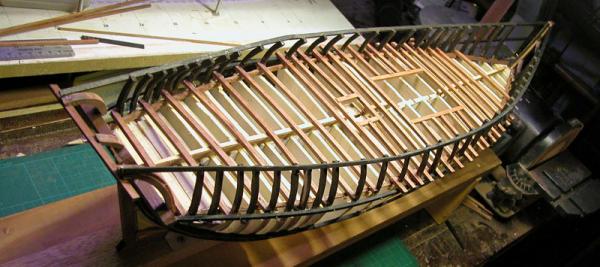
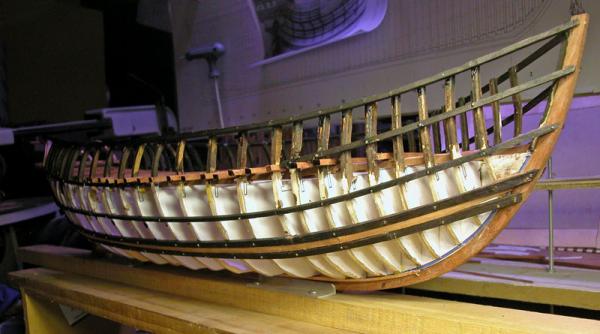
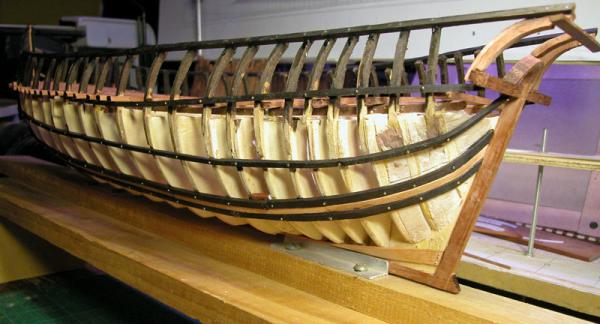
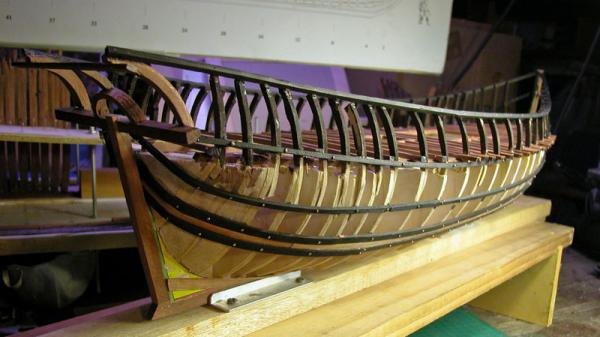
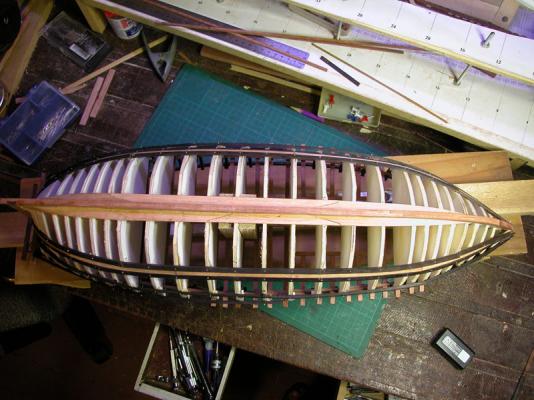
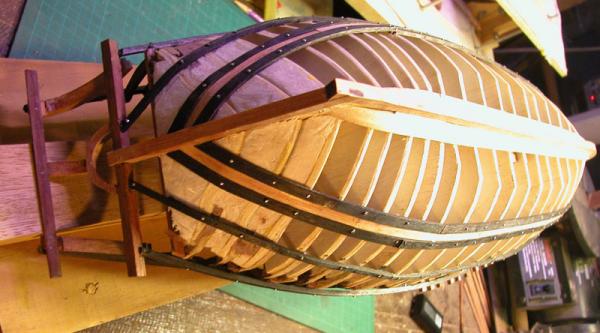
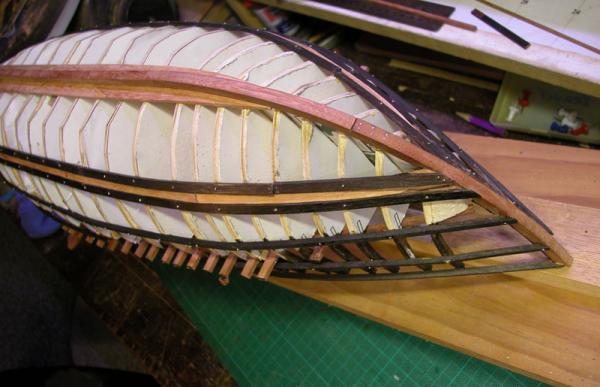
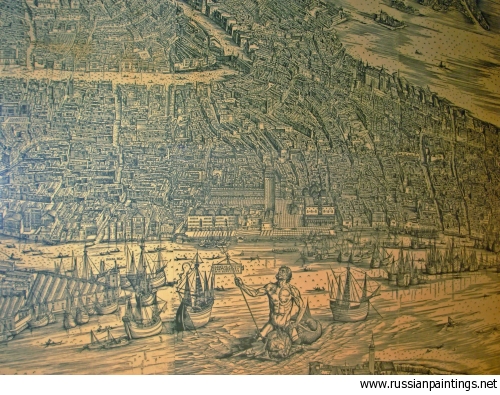
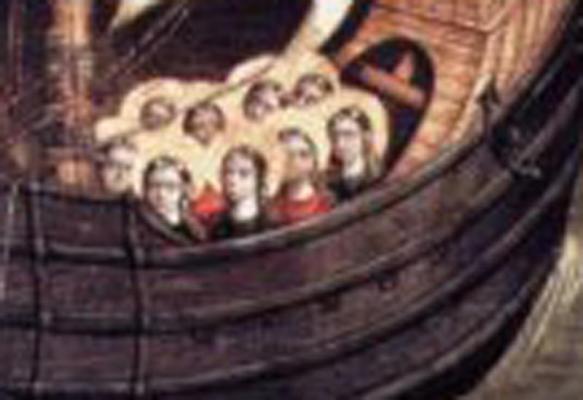

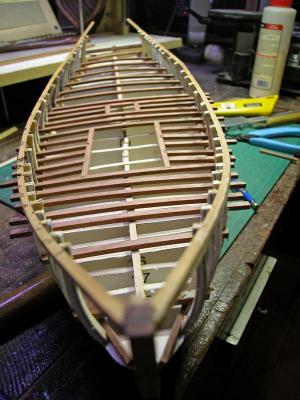
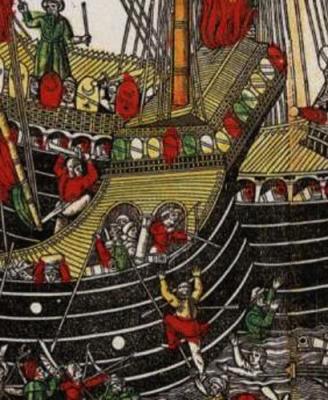
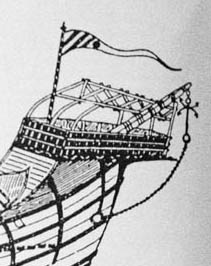
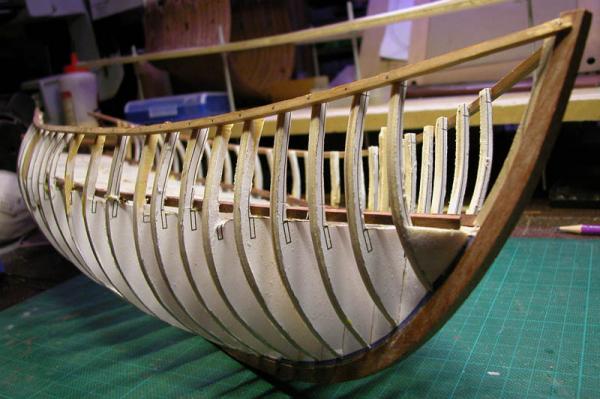

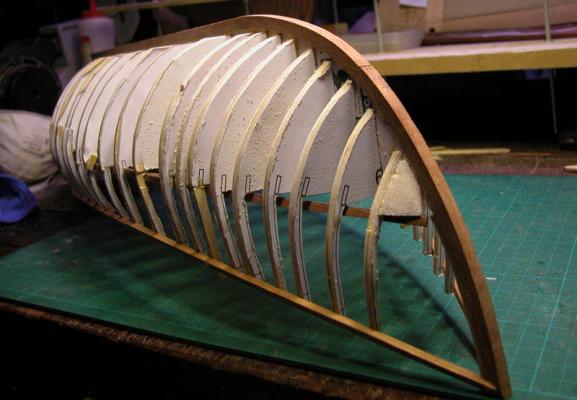
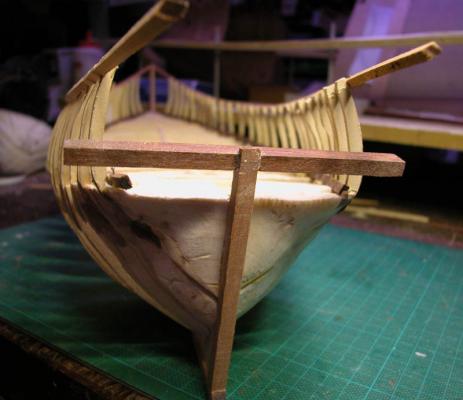
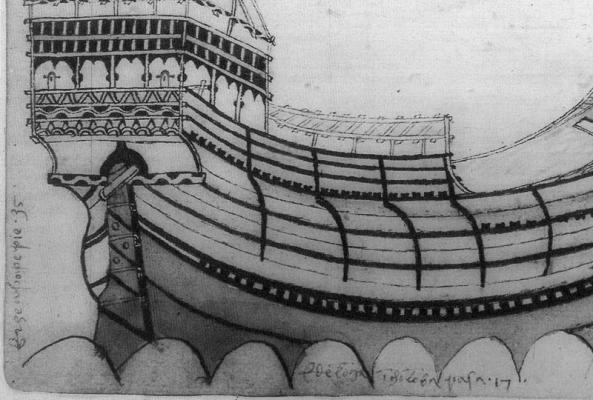
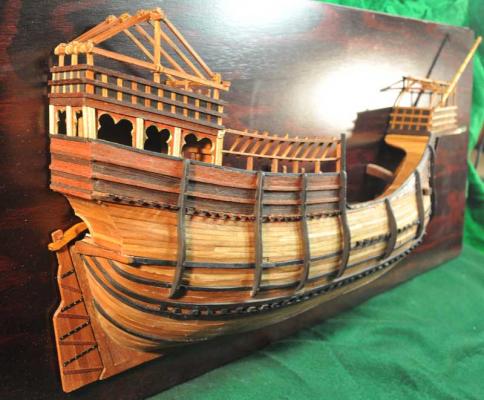
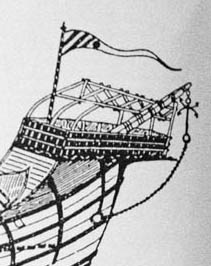
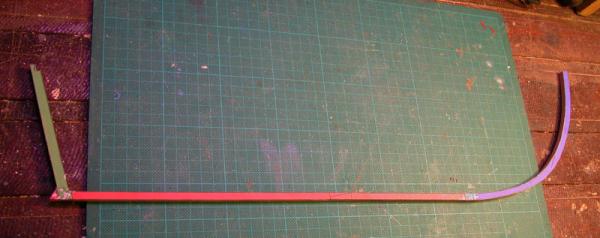
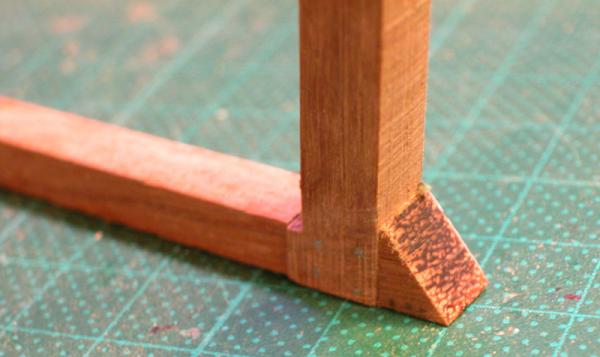
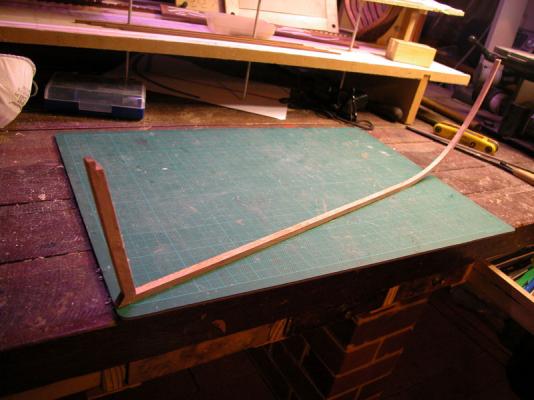
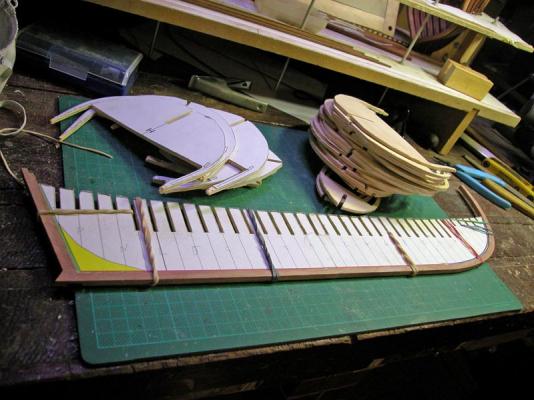
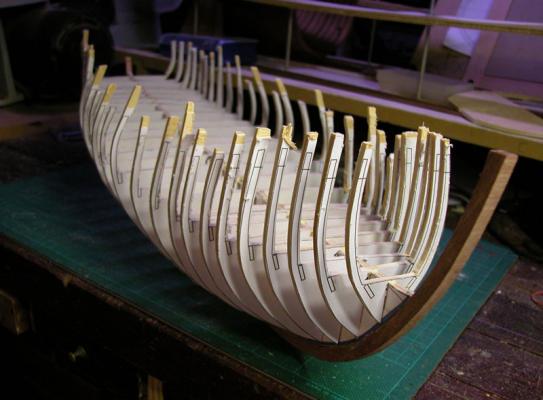

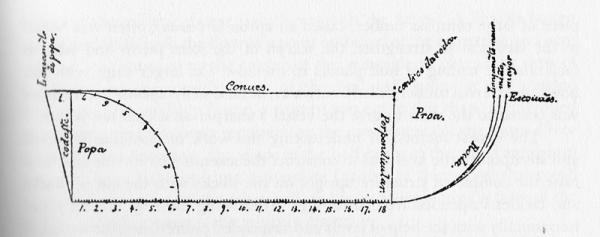
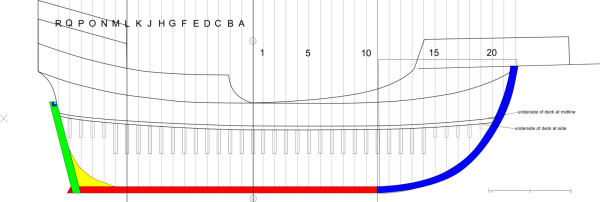



Venetian Carrack or Cocha by woodrat - FINISHED - 1/64
in - Subjects built Up to and including 1500 AD
Posted · Edited by woodrat
Sorry, Steven. I cant access that link. But I think I know the image referred to. As you allude, many models of carracks underestimate the length of the mainyard which is made of two timbers fished together like lateen yards.
Here are some pictures showing the bracing for the transversal bitt. The bitt is not bolted in but is wedged in placed. This allows some slight movement of the bitt which protects the side timbers. It also allows removal of the bitt if required.
Dick